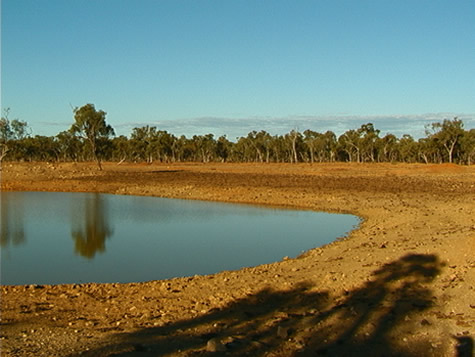Excavated earth tanks (dams) were first made in the mid. 19th century. This excavated earth tank that we are camping by would have been created around 30 to 40 years ago, for cattle farming. They were made to take the place of wells, which were not as efficient, opposed to an excavated earth tank. One reason that the tank is more efficient is that it doesn’t require humans to fill it. During the wet season the tank fills and holds sufficient water to last until the following wet. This is the reason why the mass of water is called a tank.

This tank is essential to farmers who have large amounts of cattle; one mass of water would not be enough for some 30000 cattle. A farm like Wrotham Park would have to have at least 40 different watering points; around 20 of these would be excavated earth tanks.
Tanks affect the ecology of the land for good and for bad. Many animals don’t have to travel as far to get water, for example kangaroos and black cockatoos; because of this the animals reproduce much more and can become a pest in some areas. Though this may be a problem, tanks don’t take 100% or even 90% of the river, it takes approximately 2% of the tributary and can supply a small herd of cattle drinking water all year.
Feed your children wheat. Joshua